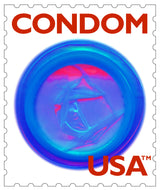
- Keep your baby from getting HIV
- Keep your kids from getting HIV
- More information on protecting your children from HIV
Keep your baby from getting HIV
It is very possible for an HIV-positive mother to have a healthy baby that is not infected with HIV. When medicine is used correctly, an HIV-positive woman treated early in her pregnancy now has a less than 2 percent chance of delivering a baby with HIV.
All women should be tested for HIV during their first prenatal care visit, early in the pregnancy. Treatment, calledantiretroviral therapy, works best when it is used early in pregnancy and when it is also given during labor and delivery and to the infant after birth. A pregnant woman may be tested for HIV again later in pregnancy if she is at high-risk. Starting treatment later in pregnancy, during childbirth, and giving the newborn baby an anti-HIV drug after birth, can also lower the risk of a mother passing HIV to her baby. If a mother is HIV-positive, her doctor may also recommend delivering the baby by C-section.
A mother also can pass HIV to her baby through breastfeeding. Women who are infected with HIV should not breastfeed. Instead, give your baby formula or ask your doctor about getting human breast milk for your baby from a milk bank. You can find a human milk bank through the Human Milk Banking Association of North America ![]() .
.
Keep your kids from getting HIV
It is a parent's job to teach kids how to protect themselves from HIV. You may think your child is not at risk. But according to a Centers for Disease Control and Prevention (CDC) survey, about half of all U.S. high school students report having had sex at least once. Older students were more likely to have had sex. But one-third of all ninth graders also reported having had sex. Here are some facts about teens and HIV:
- More than 50 percent of all adolescents who are HIV‑infected don't know it.
- Most adults with AIDS were likely infected with HIV when they were teens or young adults.
- For young women ages 13–24, the most common way they get HIV is through unprotected sex with males.
- Of sexually active high school students surveyed by the CDC, 38 percent did not use a condom the last time they had sex. This put them at risk of getting HIV or other sexually transmitted infections (STIs).
- Two percent of high school students report having injected illegal drugs at least once.
- Delaying having sex for the first time can help reduce the chances of getting HIV.
Teens want good, solid advice on sexual issues from parents. That means you are their best resource! Talking with your kids about HIV, AIDS, sex, and drug abuse can be a tough task. Here are some tips to help you along the way:
You can find these and other tips about how to talk to your kids about HIV/AIDS at ChildrenNow.org's "Talking With Kids About Tough Issues: HIV & AIDS.
- Bring up the topic with your child. You could start talking about HIV when your child sees or hears a TV ad about HIV. Ask, "Have you heard about HIV or AIDS before? What do you think HIV or AIDS is?" This way, you can figure out what your child already understands and work from there.
- Give just the facts. Offer honest, correct information that's right for the child's age and development. To an 8‑year‑old you might say, "AIDS is a disease that makes people very sick. It's caused by a virus, called HIV, which is a tiny germ." An older child can hear more details. Pre-teens should understand how HIV is spread and that condoms help protect people from getting HIV/AIDS. You may need to talk about how sex works before explaining HIV. Otherwise your child may be confused. When the time is right, talk to older children about what they can do to stay safe from HIV. Be specific.
- Correct misunderstandings. Children's misconceptions about AIDS — such as the idea that they can "catch" it by being near someone with HIV/AIDS — can be scary for them. It's important to correct them as soon as possible. Be sure to check back with your child and see what she or he remembers. For young children, understanding AIDS takes more than a single conversation.
- Build your child's confidence. Praising your children a lot, setting realistic goals, and keeping up with their interests are good ways to build self-esteem. When kids feel good about themselves, they are better able to ignore peer pressure. They're less likely to use drugs or to have sex before they are ready. So they are less likely to put themselves at risk of AIDS.
- Be ready to talk about death. When talking with your kids about HIV and AIDS, questions about death may come up. Explain death in simple terms. You could say that when someone dies, they don't breathe, eat, or feel hungry or cold, and you won't see them again. Although very young children won't be able to understand such finality, that's okay. Just be patient and repeat the message whenever appropriate. Never explain death in terms of sleep. It may make your child worry that if he falls asleep, he'll never wake up. Offer reassurance. If appropriate, tell your child that you are not going to die from AIDS and that he won't either. Stress that while AIDS is serious, it can be prevented.
- Prepare kids for sex. Teach your child about safer sex. Explain that the only sure way to prevent HIV and other STIs, and unwanted pregnancy, is to not have sex of any kind. Of course, it can be hard to talk about topics like sex. But the girlshealth.gov Parents and caregivers section can help with lots of tips for talking about sex, relationships, and more. You owe it to girls you care about to share your thoughts!
- Encourage your kids to speak up. When your child is ready, teach him or her about safer sex, so that your child's risk of HIV infection is lower when he or she does decide to have sex. Don't wait too long to explain this to your kids.
More information on Protecting your children from HIV
Explore other publications and websites
-
Children and HIV and AIDS (Copyright © UNICEF)
 - This site provides a brief overview of the impact of HIV/AIDS on children worldwide and discusses what can be done to prevent the spread of HIV among youth.
- This site provides a brief overview of the impact of HIV/AIDS on children worldwide and discusses what can be done to prevent the spread of HIV among youth. -
HIV & AIDS (Copyright © Nemours Foundation)
 - This guide for parents explains what HIV and AIDS are, how HIV is spread, signs and symptoms of infection, diagnosis, treatment, complications of HIV/AIDS, and long-term care of children with HIV/AIDS. It also includes advice on how to talk to your children about HIV/AIDS and its prevention.
- This guide for parents explains what HIV and AIDS are, how HIV is spread, signs and symptoms of infection, diagnosis, treatment, complications of HIV/AIDS, and long-term care of children with HIV/AIDS. It also includes advice on how to talk to your children about HIV/AIDS and its prevention. -
 HIV and Pregnancy - This series of fact sheets explains how a mother who has HIV can lower the risk of passing the virus to her baby during and after pregnancy.
HIV and Pregnancy - This series of fact sheets explains how a mother who has HIV can lower the risk of passing the virus to her baby during and after pregnancy. - HIV Infection in Adolescents and Young Adults in the U.S. - This fact sheet gives statistics about HIV infection in adolescents and how it is most commonly transmitted in this age group. It discusses the difficulties facing health professionals who treat adolescents for HIV infection, and explains clinical studies involving adolescents.
- HIV Infection in Infants and Children - This publication describes HIV in children, including information about transmission and diagnosis. It also talks about the progression of the disease, signs and symptoms of pediatric HIV, and treatment of children with HIV/AIDS.
-
HIV/AIDS and the Young African American Women: Get Your Talk On! (Copyright © Advocates for Youth)
 - This pamphlet gives young women tips on talking with their partner about relationship expectations, past and present sexual relationships, drug use, contraception, and testing for HIV and sexually transmitted infections.
- This pamphlet gives young women tips on talking with their partner about relationship expectations, past and present sexual relationships, drug use, contraception, and testing for HIV and sexually transmitted infections. - Mother-to-Child (Perinatal) HIV Transmission and Prevention - This fact sheet talks about mother-to-child HIV transmission during pregnancy, labor and delivery, and breastfeeding. It discusses how mothers can lower the risk of perinatal transmission of HIV.
-
Talking to Your Kids (Copyright © American Social Health Association)
 - This step-by-step guide outlines what parents should do to initiate a conversation about HIV/AIDS with their children, present facts, and clarify misunderstandings that their children may have about HIV/AIDS.
- This step-by-step guide outlines what parents should do to initiate a conversation about HIV/AIDS with their children, present facts, and clarify misunderstandings that their children may have about HIV/AIDS.







1 comment
Circumcision removes the most seniitsve part of a man’s penis. The five most seniitsve areas of the penis are on the foreskin. The transitional region from the external to the internal foreskin is the most seniitsve region of the fully intact penis, and more seniitsve than the most seniitsve region of the circumcised penis. -Fine-Touch Pressure Thresholds In The Adult PenisBritish Journal of Urology International,2007, Vol. 99, No. 4, 864-869Sorrells et al.
Leave a comment